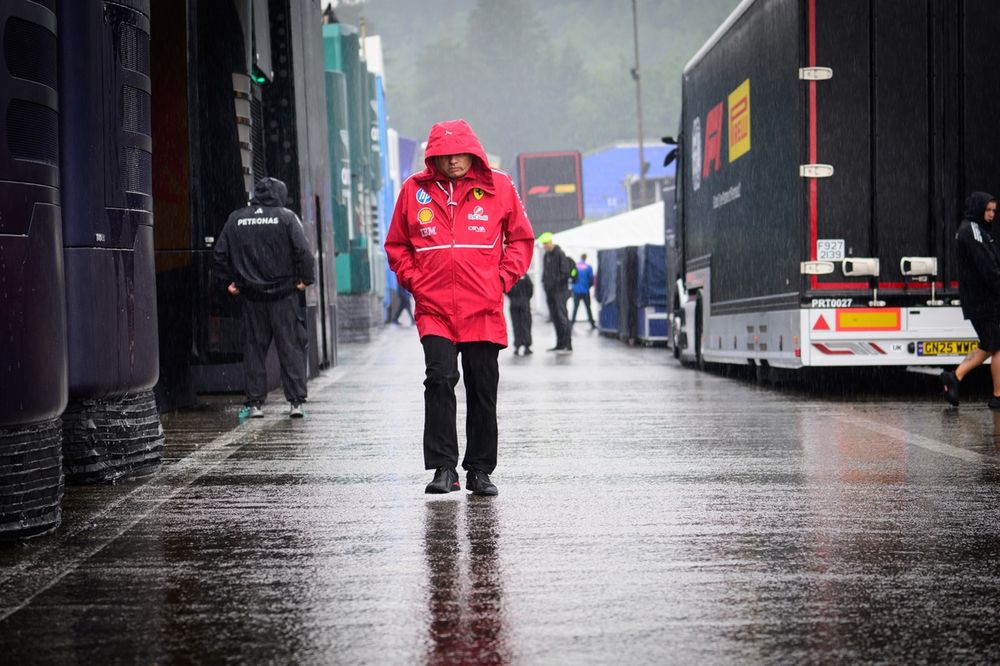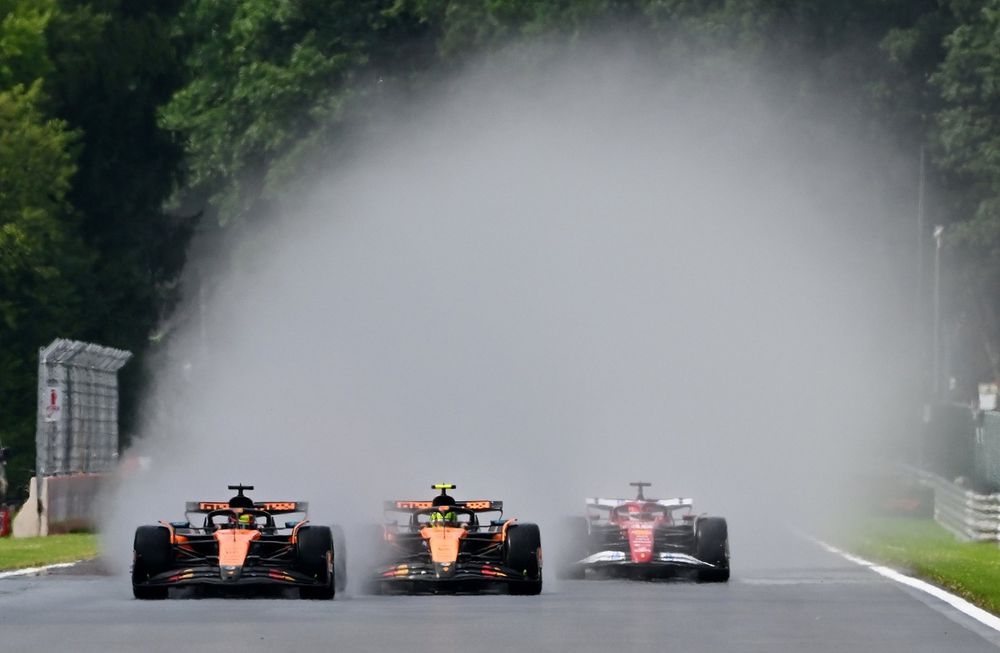In the 80-minute interregnum between FIA race control red-flagging proceedings in Belgium at the end of the formation lap behind the safety car and the race finally getting under way – albeit under neutralised conditions again – there was plenty of time for commentators and fans alike to tap their feet impatiently.
Among the sodden fans in the grandstands, the broadcasters contemplating how to fill all that ‘dead air’, and the fans back home wondering whether to switch channels to a repeat of Columbo instead, naturally a consensus formed that race control should simply get on with it.
But, while there were some dissenting voices in the paddock, the majority of drivers and team leaders agreed that the FIA officials had made the right decision, given the unique challenges of this racetrack and its long history of serious accidents in sub-optimal weather conditions.
On Thursday Alpine’s Pierre Gasly had led his now-annual ‘Run for Anthoine’ around the track, pausing to lay flowers at the place where his friend Anthoine Hubert perished in 2019; the runners also stopped further up the Kemmel Straight, where Dilano van’t Hoff crashed fatally in a Formula Regional race two years ago.
These are the areas where Spa is at its most vicious in the wet, high-speed zones where plumes of spray can conceal all manner of obstacles.
“We can’t blame them [race control] because we would be collectively the first ones to give them shit if something happened,” said Ferrari team principal Frederic Vasseur in his post-race briefing.

Frederic Vasseur, Team Principal and General Manager, Scuderia Ferrari
Photo by: Erik Junius
“In this sense, we have to respect their decision. I can speak frankly because I have one car pushing on the high downforce, one car pushing on the low downforce and I was comfortable to respect their decision because they are taking a huge responsibility also.”
Naturally, this being Formula 1, individual optics were demarcated by matters of competitive advantage. Those teams who had adopted higher-downforce settings ahead of qualifying for the grand prix, taking a performance ‘hit’ there believing it would be repaid in the form of an advantage in the wet conditions forecast, took a more negative view.
“I think we’re all surprised, I believe, by how late we started the race,” said Red Bull team principal Laurent Mekies, who was for a short time deputy race director to the late Charlie Whiting before ‘crossing the floor’ back to competition.
“I’m sure the FIA had its own considerations. But certainly, for us as a team, it surprised us. Because fundamentally we waited not only for the rain to stop, but also for pretty much the sun to come out. And then we still had many laps behind the safety car.
“In our specific case, having biased the cars towards wet running, for sure, it’s costing us performance. But it’s part of the game.”
Motorsport understands that on the first formation lap before the suspension, all the drivers but one complained about visibility and declared it unsafe to race straight away. While the grip available would likely have been adequate, the key issue was the drivers’ limited field of vision.

Lando Norris, McLaren, Oscar Piastri, McLaren
Photo by: Michael Potts / Motorsport Images
This is an issue baked into the current generation of cars. Experiments with means of containing the spray from F1 tyres after the farcical 2021 Belgian GP, where the result had to be declared after just two laps behind the safety car, came to nothing.
The majority of spray is generated by the cars’ ground-effect venturi tunnels and is a fundamental consequence of the way they generate downforce. In Spa, the issue is compounded by the track’s topography: the compression at Eau Rouge makes it difficult to see and react to any incidents at Raidillon, and the Kemmel Straight that follows pitches drivers flat out into a wall of spray.
“I think today the race was managed in a very wise way,” said McLaren team principal Andrea Stella, because we knew that there was a lot of rain coming, and I think in a circuit like this, if you make the calls late, it may be too late, and the outcome could be difficult.
“We always praise the work of the FIA when this is deserved, and I think this is one of the cases in which this should be praised. Because I understand that it would be quite entertaining to see cars going in wet conditions, but we all should be wary that the average speed in Spa is so high that the cars just displace such a large amount of water that it’s just impossible to see.
“We’ve seen already in Silverstone that a car [Isack Hadjar] drove into the gearbox of another car [Kimi Antonelli] because it was impossible to see it, and it was lower and there was less water. So, we don’t want to see the same in Spa.”
In this article
Be the first to know and subscribe for real-time news email updates on these topics

